During the nine-day summer break before the summer quarter started, I went to Leavenworth with my boyfriend and a couple of his friends. It was our first trip together that we looked forward to; one that we hoped would be such a treat amid the overwhelming pandemic.
We stayed at a nice Airbnb house by Lake Wenatchee for four nights. My boyfriend, Andrew, had a great time catching up with his buddy and his wife, whom I met for the second time since their wedding last year. It was a happy and relaxing time for all of us; like cave people who got the chance to socialize and rest for the first time in years. We slept for long hours, had delicious sausages in Leavenworth, absentmindedly stared at the beautiful view of pine trees and Lake Wenatchee outside of the window.
Kayaking was a main activity we planned to do, which we were excited about, especially Andrew. Before the trip began, we went around the neighborhood sourcing kayaks and the outdoor gear we needed. Everything was well prepared.
The first day was a rehearsal. We prepared the boats, snacks and drinks, a leak-proof box for our phones, and wore sunscreen cream and bug spray. We kayaked to the opposite side of the lake as shown below. The distance is about half a mile. It was a hot, peaceful day, and the water was cold.

I kayaked two times in my life, both in the lake where the water is calm. Currents only come from a jet ski or a boat from a far distance. I enjoyed it both times. It’s satisfying to be able to move and control the boat with paddles in my hands. Deep water? No problem! I had a life vest on and I can swim really well. What else to worry about?
For the rehearsal, I decided to take off the life vest half way when kayaking back to the house because it weighed me down. We arrived back home safe and sound. It was a good practice that helped us be ready for the adventure planned for the next day.
Here was the plan for the next day: we’d kayak on the White River down to Lake Wenatchee and then through the lake till we arrived at the house. At first I was concerned that the trip would be way too long for a beginner like me. But Andrew said that as the river flows downstream, it will do most of the work for us. We only had to control our boats and avoid logs.
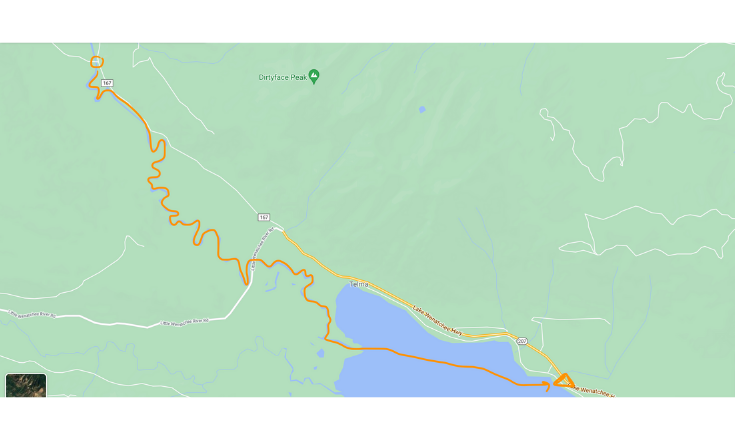
The next morning, we loaded the car with the kayaks, outdoor gear, food and drinks. Then we drove on route 167, White River Road, took a turn at the intersection and parked at the area near the bridge where we could launch the boats.
It was a mix of excitement and awe the moment we launched our kayaks onto the river because we were now in the wild, going with the flow of water from the mountain, surrounded by pure and beautiful nature.
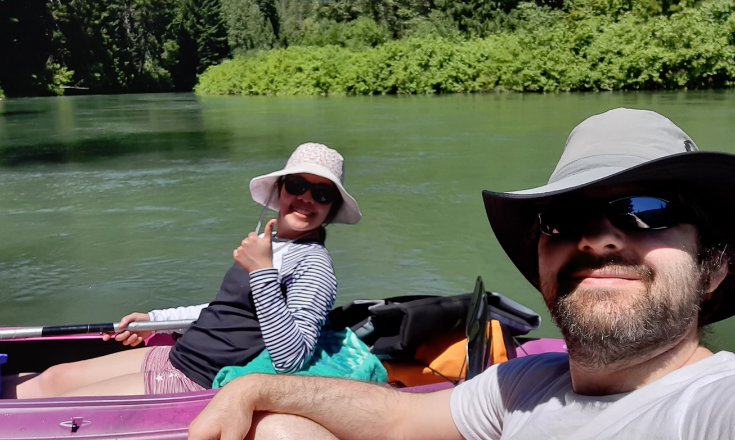

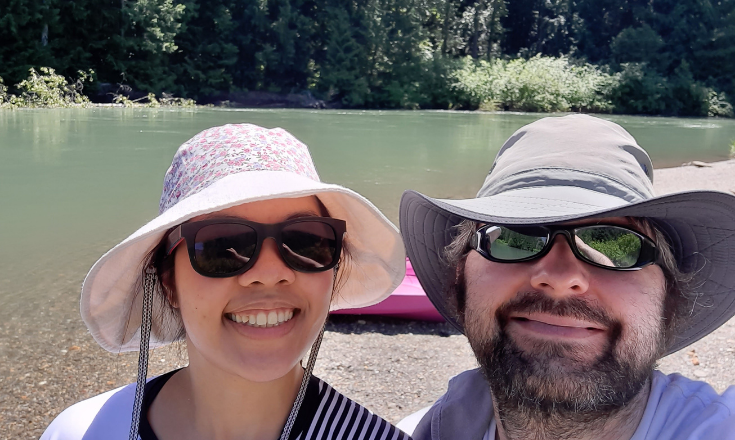
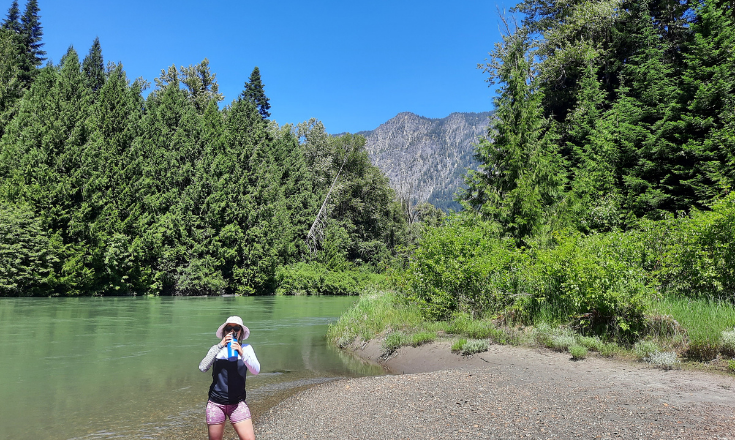
White River is a calm river. It’s suitable for beginners at kayaking, canoeing, or rafting. There are many turns but barely any rapid water or “white water”, which can be dangerous and difficult to handle. Due to the record high heat that particular week, snow melted more than usual, causing the water level to be quite high. Higher than we expected.
This was my first time kayaking in the river. The saying, “You don’t know what you don’t know.” became more true the longer I was on the boat. What kayaking in the lake never prepared me for was to get good at turning left, right, and reversing, and to be able to do all that in a swift moment. Those are crucial skills for river kayaking where, at some point, we have to fight with the river flow.
There it came, the first log was in front of us, blocking the whole river horizontally. But, it was small, so my kayak passed over it easily. Andrew, however, had a little trouble with it because his boat was heavier. A while after, we saw another log blocking the river on the right side. The water flowed more rapidly than other areas because this area is a straight line. I was trying to turn left to avoid it but it was too late. My boat hit the log on the right side and immediately flipped.
I was under the water for a couple seconds before popping up on the surface and gasping for air. Another fact hit me: I didn’t wear my life vest. It was attached to the boat. What a fool. I held on to the flipping boat while swimming. God knew where my paddle went. I didn’t know what to do but looked for Andrew. He was behind me and about to float beyond me due to the river flow; he was telling me what to do. But I was in panic. The water was damn deep and felt as if it was ready to swallow me whole. My loose water shoes weighed me down underneath the water.
I desperately tried to detach the life vest from the boat. The river carried me and the boat to the next large log, and thankfully, the kayak was stuck there and I was able to climb onto the log. The river was trying to carry Andrew away, but he fought the current by paddling upstream. He told me to get the boat unstuck and float along with it.
“It’s too heavy, I can’t get it out from the log!” I yelled back while trying to move the boat several times. The difficult part was the boat surface stuck halfway underneath the log, which took the resistance of the flowing river making it impossible for a tiny, panicked girl like me to fight that force and push it down the river flow again. I was afraid that Andrew might lose the fight of paddling against the flow and have to let go, unable to come back to help me. But he didn’t. He managed to hold on to the log and tied the boat with it. I was still in shock and couldn’t follow his instructions. Oh wait, he could even rescue my paddle and my sunglasses.
It took much effort for Andrew to free the boat. The moment it floated again, he told me to jump in the water and swim along with it. He said we’ll have to arrive at the next sand bank so that we could flip the boat back over because now there’s too much water and it’s too heavy to flip it in deep water like this.
“You gotta jump, babe, now!! Can’t you swim?” He was stressed. I was paralyzed.
The fear attacked me again and I suddenly understood why. The fact that I can swim really well comes with a condition: I swim in a swimming pool most of my life. I’ve been used to seeing things clearly underneath the water, shallow or deep, and even enjoyed diving. I swam in the sea a few times where my feet could reach the sand and the water level was below my chin. I never practiced swimming in flowing water like the river where I can’t see shit and have no life vest on. I had all the gear for this adventure but was terribly neglected and lacked the skill to handle the situation. So no, I couldn’t just fucking “jump, babe”.
“The water is too deep and I don’t have the life vest!” I yelled back, hopeless.
Andrew was frustrated as we saw the flipped kayak floating further…almost out of sight. He thought for a moment and jumped in his boat and told me to untie it from the log.
“Get on the boat now. Put your butt in here first, in the middle. Don’t tip it to the side, otherwise we all will flip.” It took me a while to overcome my fear that I might tip the boat again if I failed and put my bottom down in the boat in front of him. The boat dipped lower into the water but stayed stable. Then we let go of the log and went after the other boat.
As Andrew paddled and navigated, he kept emphasizing the importance of keeping the kayak balanced at all times no matter what direction we head to. If we have to pass over a log, we have to land or even crash on it with the nose of the boat, not the side. If we want to avoid obstacles or tree branches, lean forward or backward only, not to the side.
Andrew had a very difficult time navigating as I was sitting right in the position where he paddled. I didn’t know how he did it, but he kept up with the boat, had me drag it with the rope, and yelled when I dragged it too hard that the weight was on the side and we almost flipped the boat.
And finally we landed at a sand bank, Andrew, me, and two boats. I thought I had already lost my phone and the life vest but I didn’t. My phone was dry and secured in the leak-proof box that was tied to the boat and the life vest was somehow stuck on the boat even though I unbuckled it while in the river. All I lost were my water bottle and towel that were not tied to the boat and the sunglasses that might be lost when we were rescuing my boat.
After removing water from the boat, Andrew had a serious talk with me about what I did wrong and what I could have done. He also apologized for not preparing me for any potential critical situations and for the lost sunglasses. “Forget about the sunglasses, babe. I didn’t lose my life. You saved me.” Although I knew that he saved me and he would do it again, the fear of the situation was intense. When I thought about the fact that we still had to spend hours in this river before we reached the lake, I wanted to give up and go home. I broke down.
Andrew comforted me and waited till I calmed down and we took off again, this time with more lessons learned and better preparation. I wore my life jacket. Andrew took a lead. He showed me techniques on how to use the paddle to control the boat to a certain direction including handling a swift turn of water, gave me instructions of where to paddle, and warned me about obstacles and logs that lay ahead, so I had enough time to control my kayak.
With fear covering my heart, I tensed up for the rest of the journey and didn’t pay attention to the beauty of the river or take photos. Luckily, there were no more swift water areas or logs that blocked the way, we only had to handle river turns. I slowly gained more confidence as I controlled my kayak through those turns better than before and understood the river’s behaviour a little more.
“I think I see the lake.” Andrew said.
When I heard that, the weight on my shoulders suddenly went away. He was right. The lake was definitely in front of us. At that moment, I felt like I survived a war and became happy for the first time since the kayak flipped. I didn’t mind paddling for an hour through the lake until we reached the house. Even though the lake is deeper than the river, it’s calmer and it’s something I’ve been used to. Then we finally arrived at the little beach in front of the house. We made it. I was relieved. Andrew was a great leader and taught me so much. The rest of the vacation days were nothing more than enjoying the nice lake view, great food, and conversations with friends.
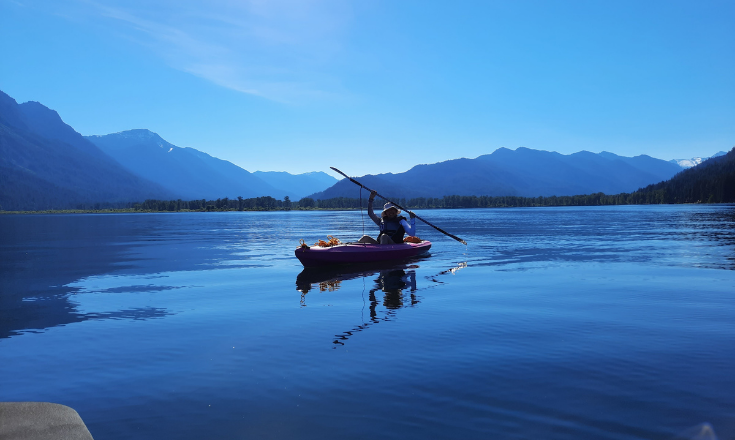
Since summer will last for a while and many people still go on adventures, it’ll be helpful to end my story with some lessons learned about kayaking in a river as a beginner and advice from Andrew, an experienced kayaker.
Lessons learned
- Put a life vest on! Always! It might be bulky during paddling or even weigh you down, but it saves your life if things go wrong. It’s non-negotiable.
- Keep the balance as much as possible at all times. Avoid putting weight on a side of the boat, including pulling anything from the side (tree branches, rope, etc.), because you may lose balance easily. Losing balance makes your boat flip. If you can’t avoid hitting a log, try to hit it with the boat nose, not the side.
- Tie every single thing tight to the boat. We used carabiners to secure stuff we carry in the boat and all carabiners were tied to the boat. That’s why I didn’t lose anything that got tied when the boat flipped, but I lost everything that wasn’t tied. Also tie the paddle to the boat with a long string, so you can freely move your paddle and won’t lose it if anything happens.
- If the boat flips and you can’t flip it back, hold on to the boat tight and go with the flow till you arrive at a sand beach or wooden log. The kayak will always float, so you won’t drown if you hold on to it till you land at some place on a riverside, where you can manage your boat and get in the boat again.
Although that incident made me scared of going kayaking in a river again, what it taught me besides being physically prepared was how to cope with my fear and panic – which could either save or kill you. Since I want to be able to enjoy kayaking again, get more comfortable kayaking in the river, and have more kayak trips with Andrew, I’m determined to practice more with him. The more practice I have, the better I can handle my mental states and become more confident doing it.
Remember that even though adventurous water activities can be extremely fun and give you an adrenaline rush you need, we all want to make it home safe at the end of the day. Therefore, if you’re about to go kayaking, be well prepared. It’s better to be safe than sorry.
Author

Gift is a Programming AAS-T student and a Web Manager Consultant at the Seattle Collegian. She defines herself as a minimalist, who enjoys living low-waste and makes websites. Her goal is to create more awareness around sustainability in web design and how each of us can reduce carbon footprint as an individual. She enjoys improving the Collegian website as much as writing, baking, and making oat milk. Check out her website!

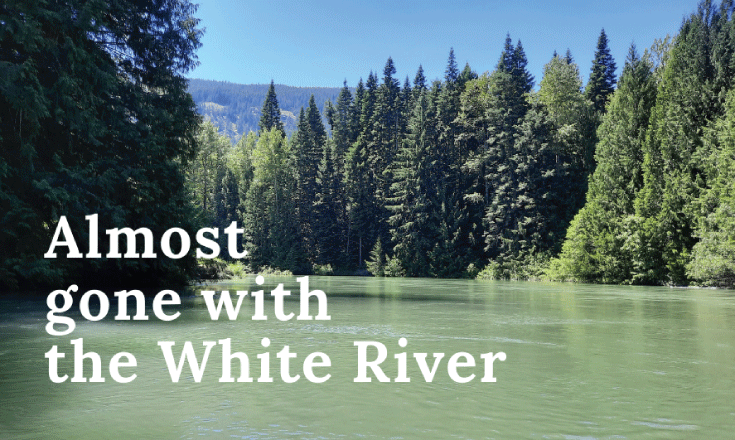









Be First to Comment